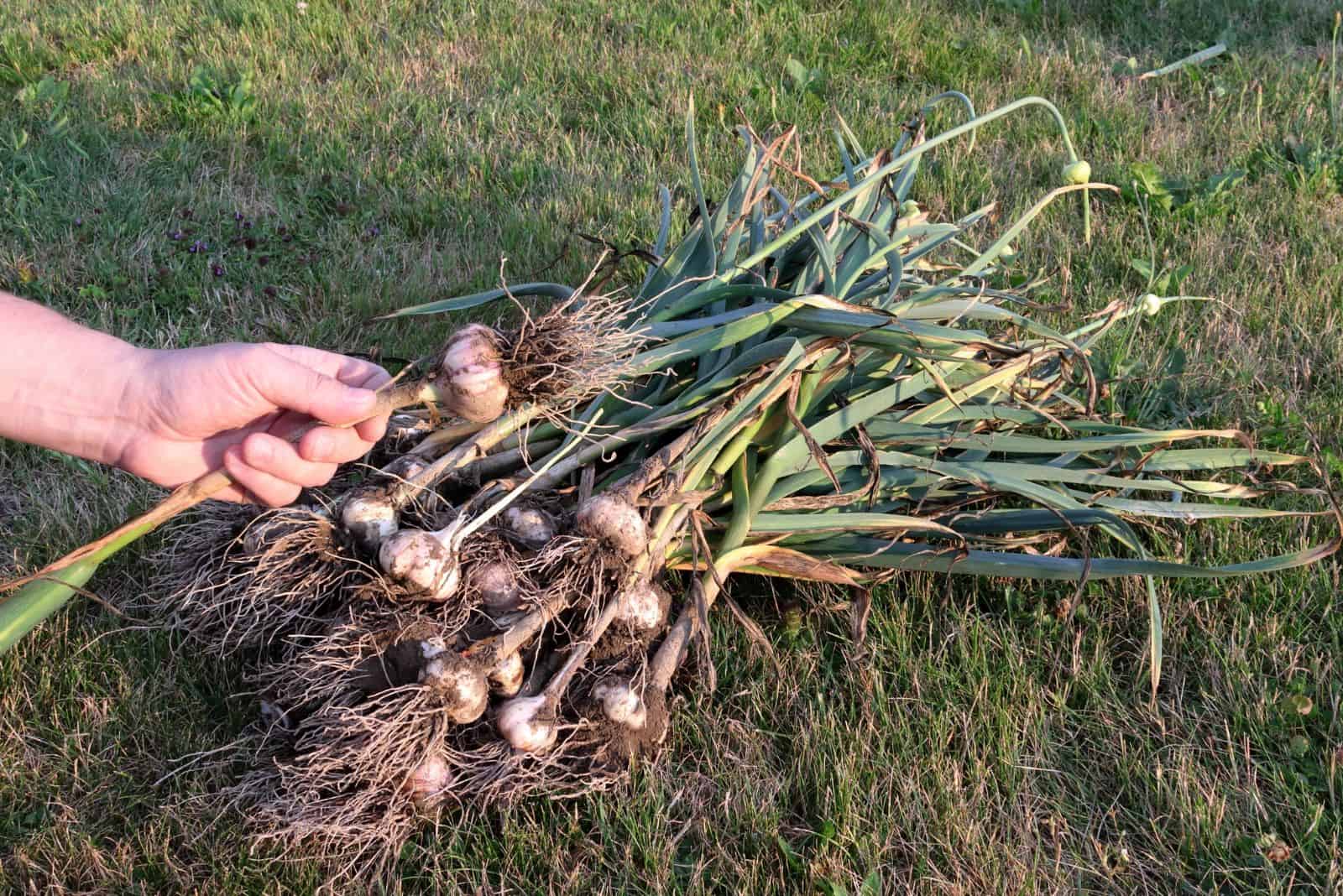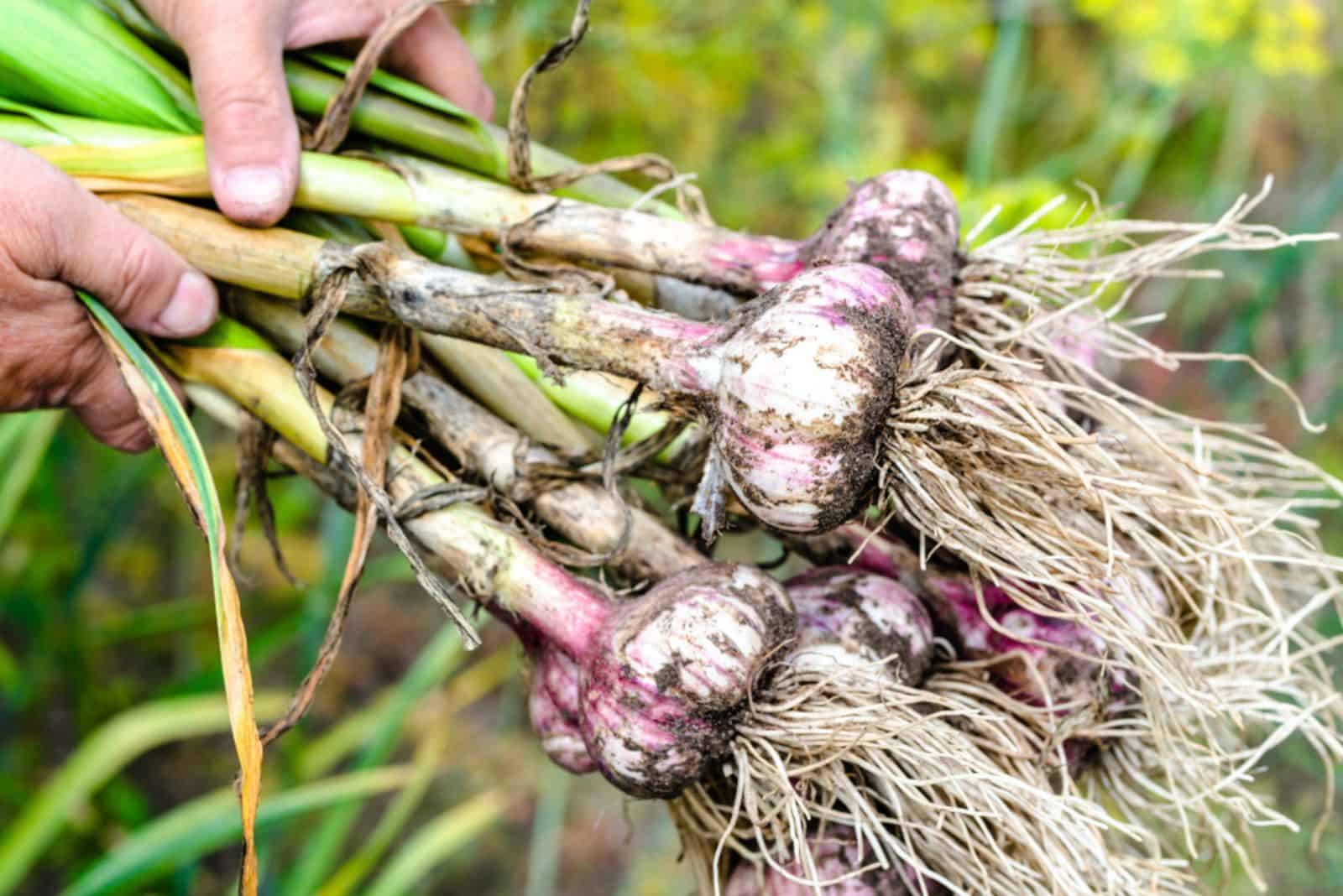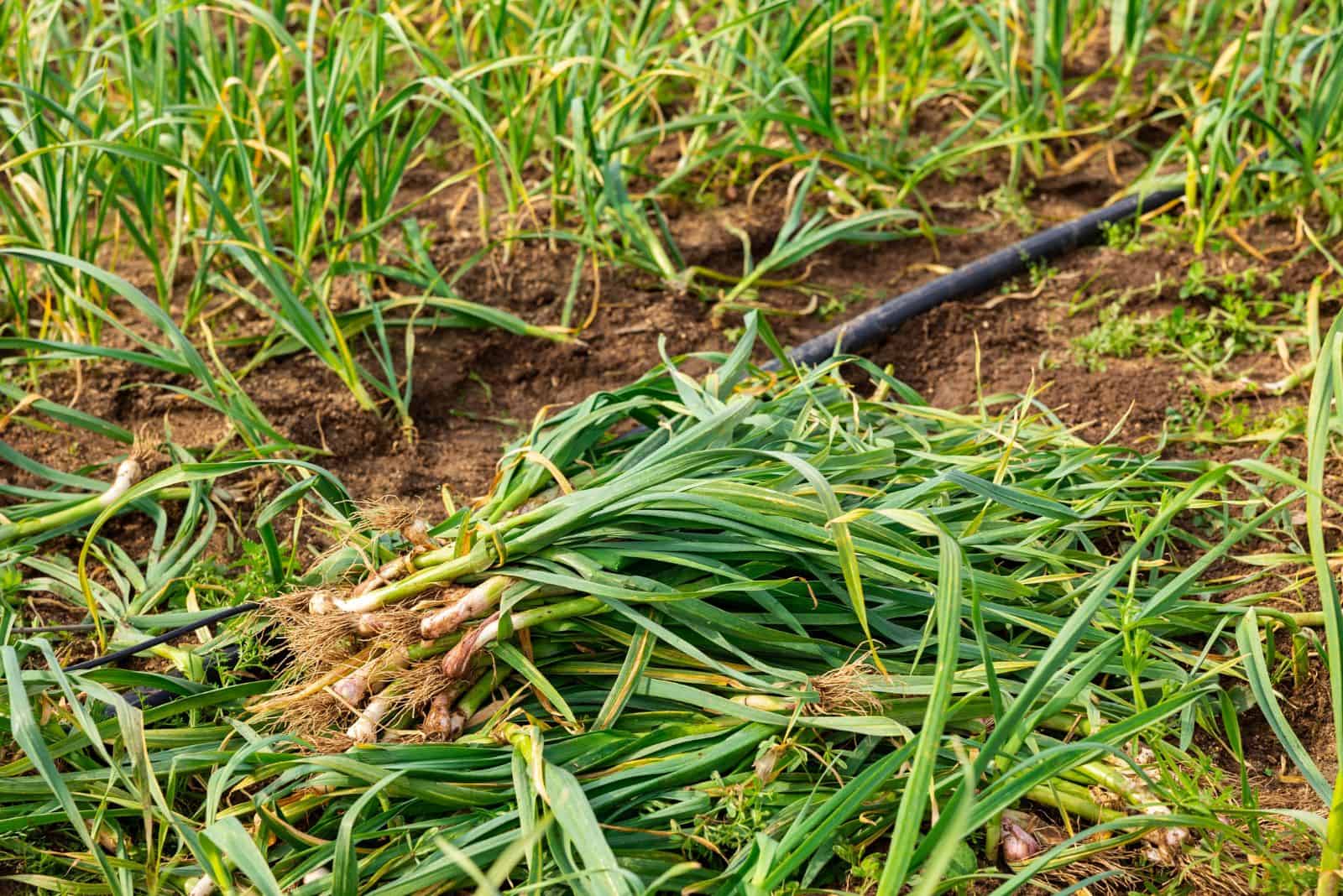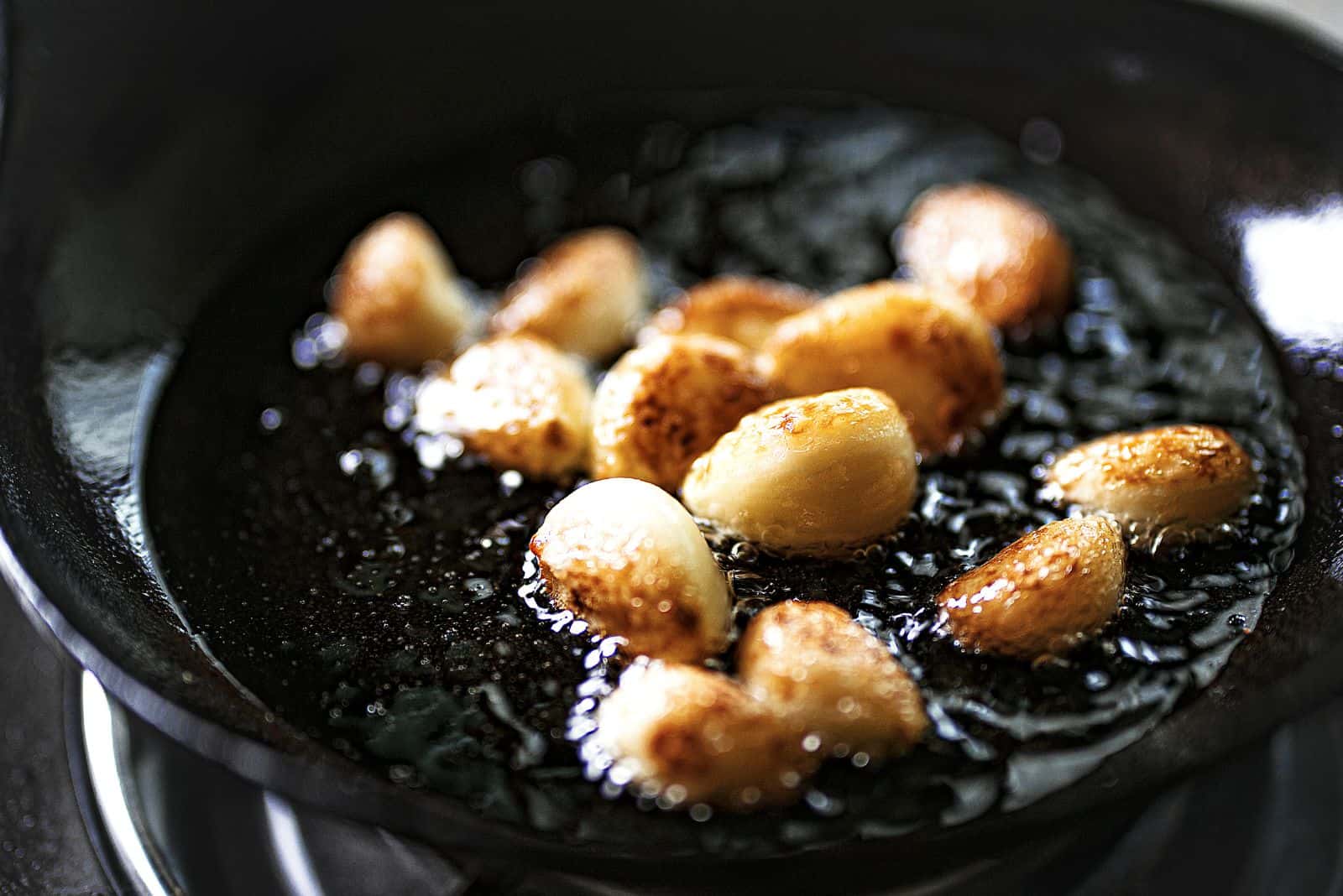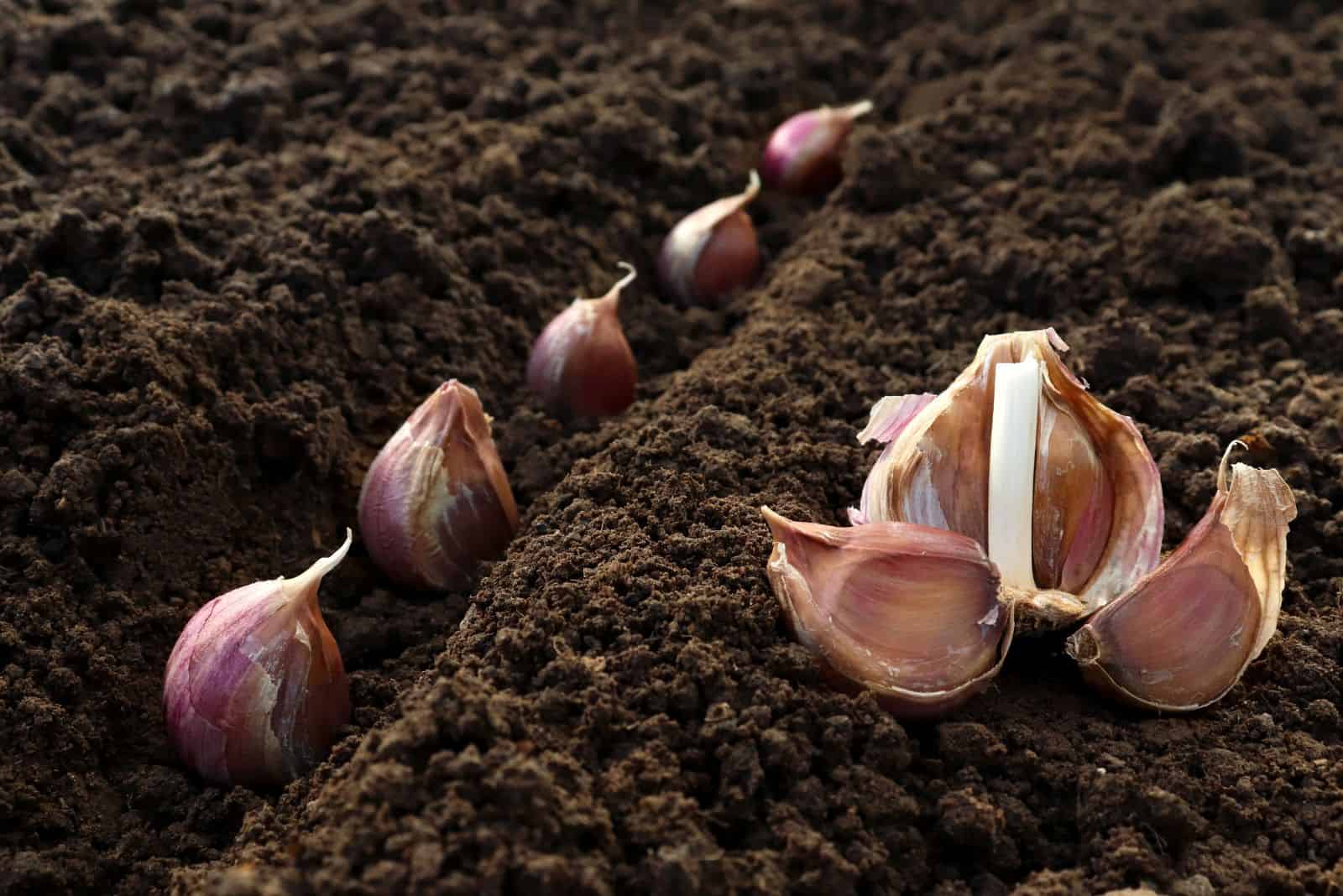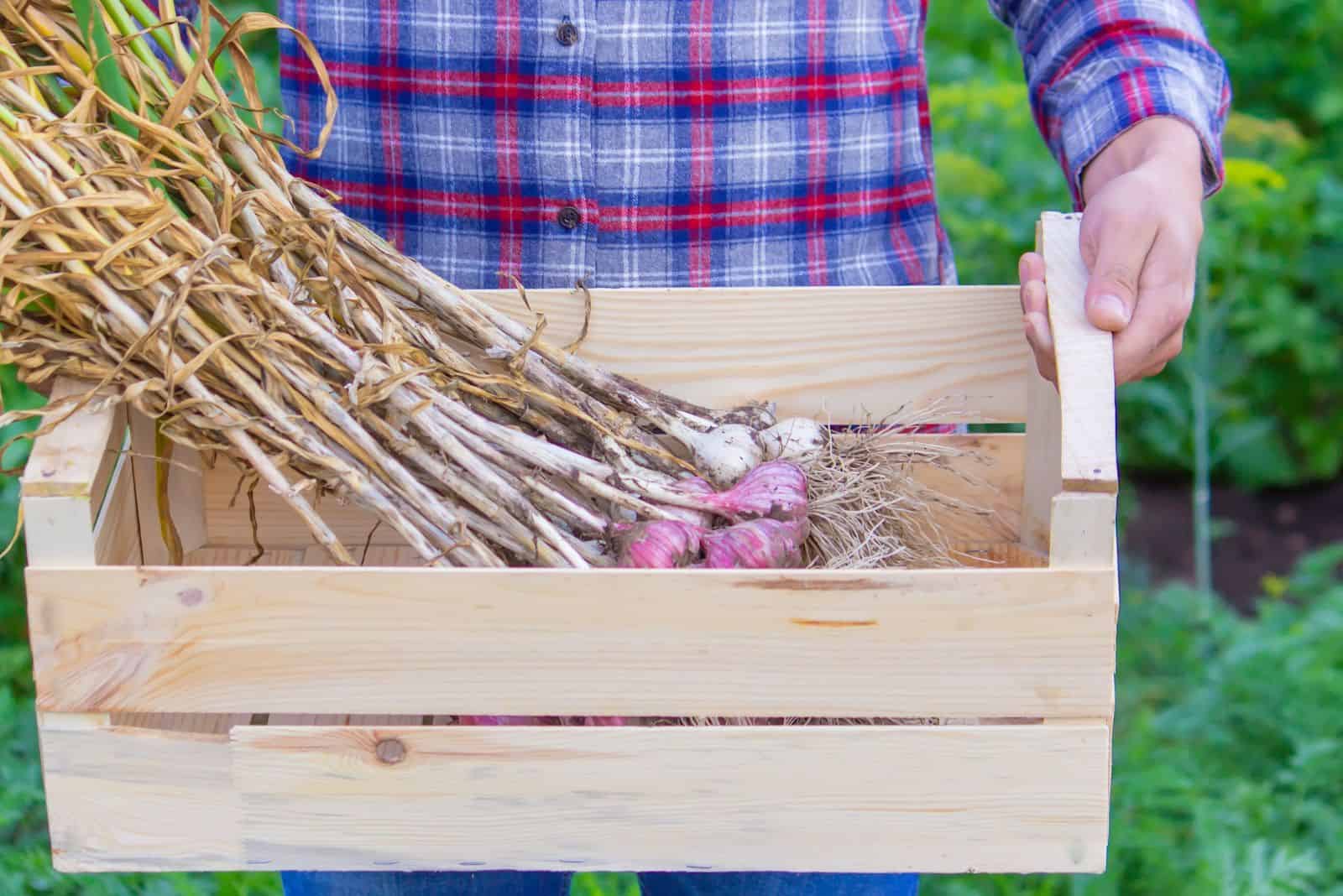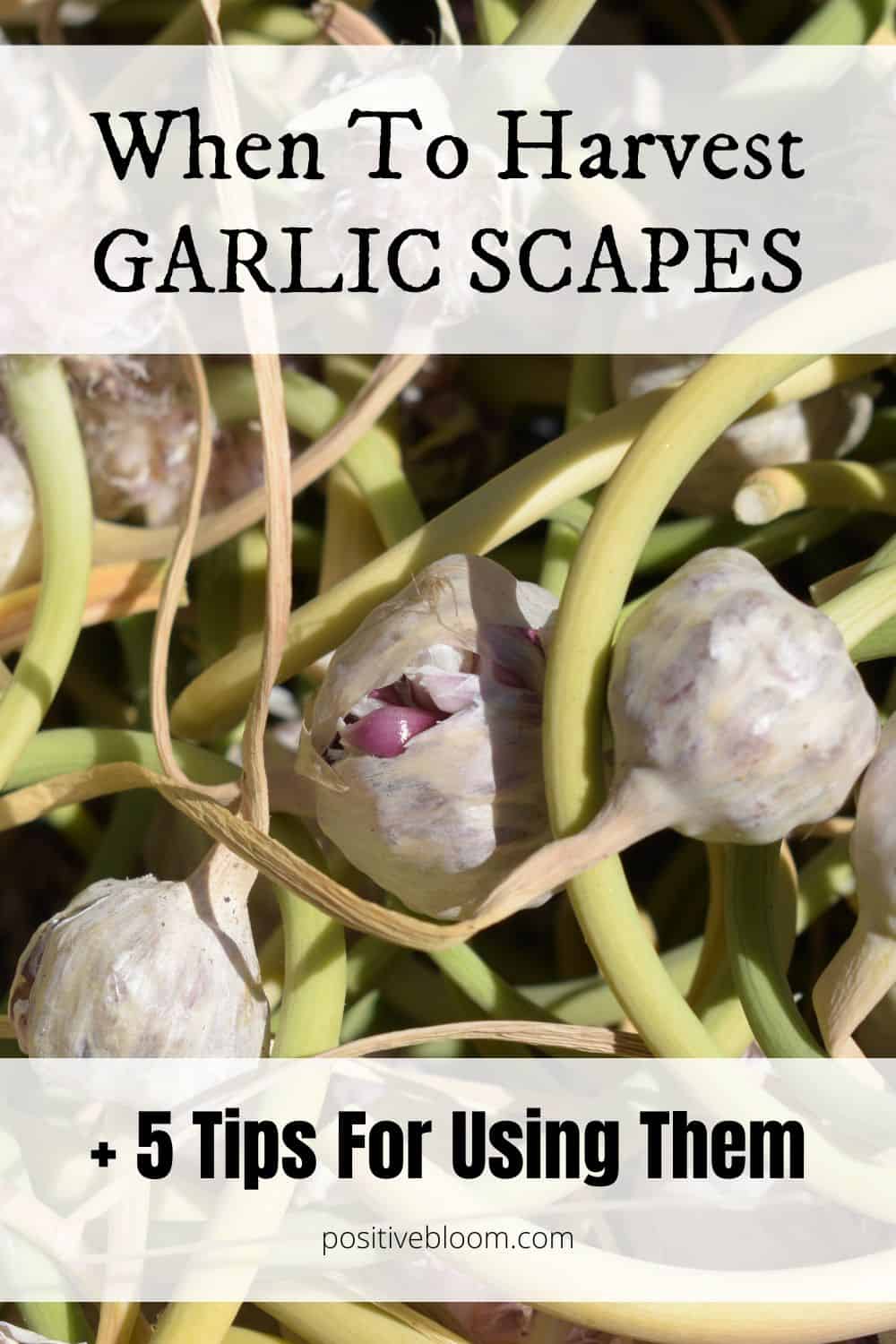Garlic is one of the most common vegetables used in cooking, and if you don’t want to go to the grocery store every time a recipe requires a clove or two, you can grow your own!
This veggie is fairly undemanding, but there are a few things beginners need to learn about it.
For instance, the scapes of the garlic plant should be harvested if you don’t intend to use your garlic crop to flower and produce bulbils that can be planted.
But what are these scapes, you might be wondering? They are actually flower stems that rise from hardneck garlic and loop as they develop.
The questions about them go on and on! When to harvest garlic scapes exactly?, How to do it?, why do it?, etc., are all the things we’ll tackle in the following article.
We also included a couple of fantastic recipes you can try out, so you don’t have to waste a perfectly good ingredient!
When To Harvest Garlic Scapes
In the Northern Hemisphere (in most climates, that is), the harvest of garlic shoots begins in late spring or early summer, some time from mid-May to mid-June.
But how can you tell if garlic scapes are ready to harvest?
Well, garlic goes through 7 stages of growth, so you just have to monitor the stem and collect it as soon as it forms its first loop. Of course, it’d be better if you could foresee the formation of the circle and harvest the scapes just before it happens.
That’ll come in time!
Furthermore, you should try to gather the scapes in the morning or afternoon when there’s no dew or moisture from irrigation. This technique won’t affect the taste of your vegetables, but it will help make a nice cut without tearing, heal the wound, and lower the risk of infection.
How To Harvest Scapes
Harvesting scapes for the first time might seem challenging, and there are two ways you can do it.
The first includes using secateurs for arthritic hands (not because you have weak hands, but because they usually have ergonomic handles and can reduce the fatigue you might experience).
Snip the scapes as closely to the base as possible (where it meets the top foliage). However, don’t cut the green leaves, as they are necessary for photosynthesis and the further development of garlic bulbs.
You can also use your hands and pull the scapes by hand. This technique will maximize your yield as you can be certain that you removed the entire curly stem. Take it below the flower pod gently, slowly, and firmly.
The stalk can break, but you can just wait until it grows back to try and remove it again.
Not all scapes will be ready for the harvest at the same time, especially if you have planted different varieties of garlic.
Why We Should Harvest Garlic Scapes
And now comes the question you undoubtedly asked yourself when you started reading this article: “Why should we harvest garlic scapes?”.
What if you don’t want to use them in cooking? Well, you don’t have to collect these stems, but your garlic bulb will be smaller as a result.
The plant will have to divide its energy between developing bulbs and producing flower stalks that bear bulbils (tiny bulbs on stems used for the reproduction of garlic).
The bulb size of this vegetable increases in the last month (they can even double), and if you remove the garlic stem, it can grow up to 25% more.
But you might have a type of garlic that doesn’t produce garlic stalks (known as softneck garlic), so you won’t have to bother removing them in this case.
You can also leave some scapes to grow above the rest of the plant and produce tiny purple or green bulbils you can plant the following season.
However, you can also use them in cooking as they contain that signature garlic flavor that improves the taste of almost any dish!
5 Ways Of Using Garlic Scapes
Once you harvest scapes, it is time to cook them! You can sauté them with other veggies, pickle them, or use them to make a pesto, soup, hummus, etc.
And the best part is that you don’t have to go to the farmers market to buy them, as you can just collect them from your garlic bed!
1. Stir Fry Garlic Scapes
If you’re in need of a fresh garlic clove or two, and you don’t want to go to the grocery store just to get them, you can just use the scapes from your garden.
These stems have a flavor between green onions and garlic, so you can use them when making chili con carne or just to add more flavor and texture to your side dishes.
You can prepare them exactly the same as you would green beans; only they’re more savory!
2. Make A Garlic Scape Pesto
Our favorite way of using garlic scapes is to make a pesto. There are many different ways you can utilize this ingredient and combine it with others, but the recipe below is our all-time favorite.
Ingredients:
2-3 cups of garlic scapes
1/2 cup of walnuts
Chopped parsley (half a bunch)
1/2 cup of grated cheese (Pecorino Romano)
3/4 cup of olive oil (or more if the mixture seems too dry)
Salt and pepper to taste
Step 1. Cut the top and the bottom parts of the scape. They are edible but can be dry and woody, which won’t provide a great texture to the pesto.
Step 2. Cut them in half, chop them, and blend the ingredients for about half a minute.
Step 3. Check whether the mixture is too dry, and add more olive oil if needed. Blend it until it forms a paste.
Step 4. Put it in a tupperware or any plastic container and place it in the fridge. This paste can last for about a week, so you can use it for various pasta recipes.
Here are some tips for making garlic scape pesto:
3. Use Scapes To Make A Hummus
Another great way to use garlic scapes is to put them in hummus. They bring out the flavor just as well as tahini, so you won’t have to go to the grocery store in the middle of cooking.
If you want to surprise everyone with your cooking skills, add some more lemon juice to complement the scapes.
4. Pickle The Scapes
Did you know that you can pickle garlic scapes? They can be ready within 15 minutes, and you’ll just have to wait a couple of weeks before serving them.
Our favorite recipe for pickled garlic scapes requires all the regular ingredients for pickling veggies but with a twist.
It’s easy to make, tastes amazing after two weeks (but you can let it sit in the brine for more if you prefer a more intense flavor), and can last up to half a year.
5. Make A Garlic Scape Soup
Garlic or onion soups may not be everyone’s favorite, but there are many gourmands that adore this starter.
You can add all sorts of ingredients, such as wine, parmesan, potatoes, etc. – you just have to find the right fit.
And the best thing about this soup is that it doesn’t have that signature garlic fragrance because you roast them beforehand.
How To Store Garlic Scapes
Growing garlic isn’t that difficult, and one of the “by-products” is garlic scapes.
These stems can last for about 2-3 weeks if you place them in a zip-lock bag and put them in the fridge.
But if you use them in the same week, you can just place them in a jar of cold water and change it every day to keep them fresh.
Finally, you can chop these garlic stalks and place them in the freezer where they’ll last much longer.
FAQs
There are a couple more questions that require our attention, so we decided to answer them in the following paragraphs.
These are all the things you asked us that can help you improve your gardening knowledge!
How long after scapes appear should you harvest garlic?
Once the scapes appear, you can expect to harvest your garlic within 2-4 weeks. However, certain varieties might be ready for picking two months after the scapes.
What other vegetables can you grow after harvesting garlic?
Harvest is typically from late spring to mid-summer, depending on the variety, so you can plant summer crops such as spinach, carrots, tomatoes, potatoes, etc.
Of course, you should start the seeds indoors and move them outside once you pick all the garlic.
Final Thoughts
The main topic of this article was answering: when to harvest garlic scapes? We also included some other things you should know, such as how to pick them, why they should be harvested in the first place, and how to use and store them.
We brought five amazing and simple tips and tricks for utilizing this “by-product” in your kitchen that will make you love cooking even more.
Enjoy this ingredient, and until next time!
Like this post? Share or pin it for later!

